Vascular access options in lipoprotein apheresis treatment
The aim of this study is to characterise vascular access practice at the UK’s largest LA centre and forward suggestions for future approaches” Doherty et al (2017). Abstract: INTRODUCTION: Lipoprotein apheresis (LA) has proven to be an effective, safe and life-saving therapy. Vascular access is needed to facilitate this treatment but has recognised complications. Despite […]
Will simultaneous use of three CVC ports improve fluid resuscitation?
However, there are no studies comparing simultaneous use of all three lumens of a triple lumen (TL) central venous catheter (CVC) with other catheter types. Our objective was to compare the flow rates of normal saline (NS) through various resuscitation catheters against a TL CVC using all 3 ports” Traylor et al (2017). Abstract: BACKGROUND: […]
Which is the most effective solution for neonatal skin prep prior to CVC placement?

To determine whether 2% chlorhexidine gluconate-70% isopropyl alcohol (CHX-IA) is superior to 10% aqueous povidone-iodine (PI) in preventing catheter-related blood stream infection (CR-BSI) when used to clean insertion sites before placing central venous catheters (CVCs) in preterm infants” Kieran et al (2017). Abstract: OBJECTIVE: To determine whether 2% chlorhexidine gluconate-70% isopropyl alcohol (CHX-IA) is superior […]
Incidence of device associated infections in intensive care units
The incidence of healthcare-associated infections and sepsis (HAIs) is 5-10 times higher in patients in intensive care units (ICUs) than in those at other hospital departments” Hamp et al (2017). Abstract: The incidence of healthcare-associated infections and sepsis (HAIs) is 5-10 times higher in patients in intensive care units (ICUs) than in those at other […]
Opportunities exist to implement interventions that “break the links” of the CLABSI chain
Within the “Chain of Infection” that leads to DRIs in older adults, multiple opportunities exist to implement interventions that “break the links” and reduce colonization with multidrug-resistant organisms, reduce infections, and improve antimicrobial use” Schrank and Branch-Elliman (2017). Abstract: Device-related infections (DRIs) are a significant cause of morbidity and mortality among older adults. Indwelling devices […]
Effect of elapsed infusion time before the collection of blood samples for CsA serum levels
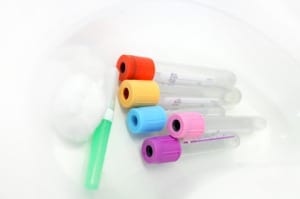
The aim of this study was to verify the effect of the time elapsed between the interruption of a continuous intravenous CsA infusion and the collection of blood samples on CsA serum levels” Garbin et al (2017). Abstract: BACKGROUND: There are controversies regarding the best way to collect blood samples for cyclosporine A (CsA) serum […]
Developing an OPAT risk stratification criteria for active intravenous substance users

This retrospective review from January 2014 through July 2016 aimed to develop a risk stratification approach to aid rural healthcare providers in determining who among patients with addictive disorders could safely be discharged for outpatient antimicrobial therapy with a peripherally inserted central catheter (PICC)” Camsari and Libertin (2017). Abstract: Background: An active intravenous substance use […]
Three paediatric ultrasound-guided vascular access techniques reviewed

The authors aimed to determine paediatric emergency department nurses’ attitudes toward ultrasound-guided IV access techniques and assessed practice change after training” Ng et al (2017). Abstract: Background: although nurses often place peripheral intravenous (IV) catheters, little is known about their perceptions regarding use of ultrasound guidance. Aim: the authors aimed to determine paediatric emergency department […]
Observational study of peripheral intravenous catheter outcomes
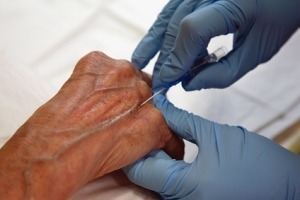
Modifiable risk factors should inform education and inserter skill development to reduce the currently high rate of PIV failure” Marsh et al (2017). Abstract: BACKGROUND: Almost 70% of hospitalized patients require a peripheral intravenous catheter (PIV), yet up to 69% of PIVs fail prior to completion of therapy. [ctt link=”0Sf7Q” template=”1″]ReTweet if useful… Observational study […]
Patient experiences of peripheral IV insertion in hospital

The aim of this study was to gain an understanding of patients’ experiences of PVC insertion” Larsen et al (2017). Adult medical and surgical patients admitted to tertiary hospitals regularly have peripheral venous catheters (PVCs) inserted for their treatment. Anecdotally, patients report varying levels of pain and anxiety during the insertion procedure; however, lived experiences […]
Tissue adhesive for vascular access device securement?
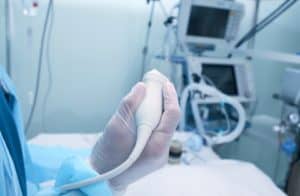
This article aims to review the types and properties of tissue adhesives, provide an overview of the existing evidence base, and discuss how tissue adhesives may be used in clinical practice” Corley et al (2017). Reference: Despite vascular access devices (VADs) being vital for patient care, device failure rates are unacceptably high with around 25% […]
Telemedicine support groups for home parenteral nutrition users

The authors provide the rationale for the telemedicine approach with HPN users and caregivers. They provide “how-to” information about the content and process of the facilitated support group sessions via secure videoconferencing” Nelson wt al (2017). Abstract: Patients receiving home parenteral nutrition (HPN), a life-sustaining intravenous (IV) infusion that provides nourishment and hydration to patients […]
Fluid overload in children undergoing mechanical ventilation

Patients admitted to an intensive care unit are prone to cumulated fluid overload and receive intravenous volumes through the aggressive resuscitation recommended for septic shock treatment, as well as other fluid sources related to medications and nutritional support” Lopes and Piva (2017). Abstract: Patients admitted to an intensive care unit are prone to cumulated fluid […]
Strategy to engage doctors in preventing healthcare-associated infections

We undertook a pilot study entitled ‘HAI (pronounced ‘high’ – healthcare associated infection) Time’ which utilised a 30 s ‘HAI Time’ checklist to observe doctors’ hand hygiene on approaching the patient’s bedside and initiate removal of medical devices where appropriate, to reduce the risk of HCAIs” Wilke et al (2017). Abstract: Healthcare-associated infections (HCAIs) are […]
First cannulation time and survival of arteriovenous fistula

To study the effect of cannulation time on arteriovenous fistula (AVF) survival” Wilmink et al (2017). Abstract: BACKGROUND: To study the effect of cannulation time on arteriovenous fistula (AVF) survival. [ctt link=”3ItTf” template=”1″]ReTweet if useful… First cannulation time and survival of arteriovenous fistula https://ctt.ec/3ItTf+ @ivteam #ivteam[/ctt] METHODS: Analysis of two prospective databases of access operations […]
Intentional intra-arterial injection of midazolam in a patient with status epilepticus

We present a case where midazolam was intentionally injected intra-arterially to abort seizure activity in a patient with status epilepticus in the Intensive Care Unit” Ali and Yahya (2017). Abstract: Fundamental medical care includes intravenous (IV) access which provides prompt resuscitation and reliable delivery of analgesics, antibiotics, and vasoactive medication. Difficult access populations, especially in […]
Evaluation of CRBSI occurrence and CVC salvage outcomes in adult patients

It remains unclear as to whether patients are best trained for catheter care at home or in hospital or whether CRBSIs are lower if the patient self-cares for the CVC” Bond et al (2017). Abstract: BACKGROUND & AIMS: Prevention of catheter related blood stream infections (CRBSI) and salvage of infected central venous catheters (CVC) are […]
Effectiveness of portable chest radiograph with wireless direct radiography

To compare image quality, visibility of anatomic landmarks, tubes and lines, and other clinically significant findings on portable (bedside) chest radiographs acquired with wireless direct radiography (DRw) and computed radiography (CR)” Audin et al (2017). Abstract: OBJECTIVES: To compare image quality, visibility of anatomic landmarks, tubes and lines, and other clinically significant findings on portable […]
Ultrasound-guided brachiocephalic vein cannulation in children

Although the cannulation the SCV or BCV does not substitute the use of peripherally inserted central catheters or umbilical venous central catheters in neonates, it is a feasible route in very small children who are in need of a large caliber central venous access” Merchaoui et al (2017). Abstract: The correct choice of intra vascular […]
End-stage renal disease dialysis patients may experience increased risk of suicide
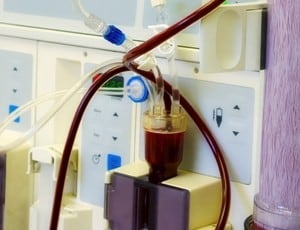
Patients with end-stage renal disease (ESRD) who receive dialysis may experience increased distress and risk of suicide” Chen et al (2017). Abstract: BACKGROUND: Patients with end-stage renal disease (ESRD) who receive dialysis may experience increased distress and risk of suicide. [ctt link=”_58il” template=”1″]ReTweet if useful… End-stage renal disease dialysis patients may experience increased risk of […]
Targeted surveillance of nosocomial infection in intensive care units

The incidence of VAP, CAUTI, and CLABSI were high in ICUs, and multi-drug resistant organisms were the primary pathogens of NI” Li et al (2017). Abstract: BACKGROUND: Nosocomial infections (NIs) impact care and costs in hospitals across the globe. There are minimal data on targeted surveillance of NI in intensive care units (ICUs), and data […]
Peripheral intravenous cannula insertion in the emergency department

To examine cannulation practice and effectiveness of a multi-modal intervention to reduce peripheral intravenous cannula (PIVC) insertion in emergency department (ED) patients” Hawkins et al (2017). Abstract: OBJECTIVES: To examine cannulation practice and effectiveness of a multi-modal intervention to reduce peripheral intravenous cannula (PIVC) insertion in emergency department (ED) patients. METHODS: A prospective before and […]
What is the morbidity associated with ethanol lock therapy?

We sought to evaluate the efficacy of ethanol lock therapy in our IF population” Meckmongkol et al (2017). Abstract: AIMS: Long-term central venous catheters are essential in sustaining growth and development in patients with intestinal failure (IF). Several strategies have been developed to prevent and treat catheter-related blood stream infections (CRBSIs), including ethanol lock therapy. […]
Clinical characteristics of neonatal fungal sepsis

To study the characteristics of neonatal fungal sepsis and the difference between bacterial sepsis and fungal sepsis. To improve the understanding of neonatal fungal sepsis” Zhang et al (2017). Abstract: OBJECTIVE: To study the characteristics of neonatal fungal sepsis and the difference between bacterial sepsis and fungal sepsis. To improve the understanding of neonatal fungal […]
Sedation-related medication errors in isolated ICU patients

Isolated patients were not at increased risk of oversedation compared with non-isolated patients” Searcy et al (2017). Abstract: Background: Patients in intensive care units (ICUs) may be placed on contact isolation for meticillin-resistant Staphylococcus aureus (MRSA) colonization to prevent transmission. Prior studies suggest that isolated patients may receive substandard care compared with non-isolated patients. An […]
CLABSI outcomes in patients with inflammatory bowel disease

Given that CVC can predispose patients to infection, this investigation was undertaken to assess the incidence, risk factors, and outcomes of CVC-related blood stream infection (CRBSI) in patients with IBD during routine clinical practice” Shibata et al (2017). Abstract BACKGROUND: Patients with inflammatory bowel disease (IBD) occasionally require central venous catheter (CVC) placement to support […]
Assisting vascular access with subcutaneous vein depth measurement
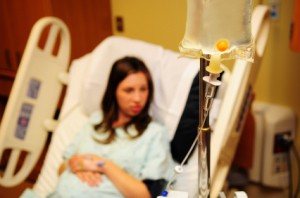
Intravenous (IV) procedures are often difficult due to the poor visualization of subcutaneous veins. Because existing vein locators lack the ability to assess depth, and also because mis-punctures and poor vascular access remain problematic, we propose an imaging system that employs diffuse reflectance images at three isosbestic wavelengths to measure both the depth and thickness […]
What is the burden of needlestick injuries in healthcare workers

The clinical, economic, and humanistic burden is substantial for HCWs who experience a NSI. Safety-engineered devices for hypodermic injection demonstrate value by reducing NSI risk, and the associated direct and indirect costs, psychological stress on HCWs, and occupational blood-borne viral infection risk” Cooke and Stephens (2017). Abstract: INTRODUCTION: Needlestick injuries (NSIs) from a contaminated needle […]
Description of occupational blood exposure in South Korea

Health care workers (HCWs) are at high risk for occupational blood exposures (OBEs) and transmission of bloodborne pathogens. This study elucidated the incidence rate and epidemiological characteristics of OBEs among HCWs and investigated the pathogen transmission rate for hepatitis B virus (HBV), hepatitis C virus (HCV), and human immunodeficiency virus (HIV)” Lee et al (2017). […]
Debate on preventing central venous line related bloodstream infections

Despite major scientific advances in pathogenesis, surveillance methods and treatment approach, the most appropriate interventions to prevent and control CLABSIs remain debatable” Arvaniti (2017). Reference: In the Intensive Care Unit (ICU), central venous line associated bloodstream infections (CLABSIs) represent an important component of healthcare-associated infections and are linked to increased morbidity, mortality and overall hospital-associated […]

